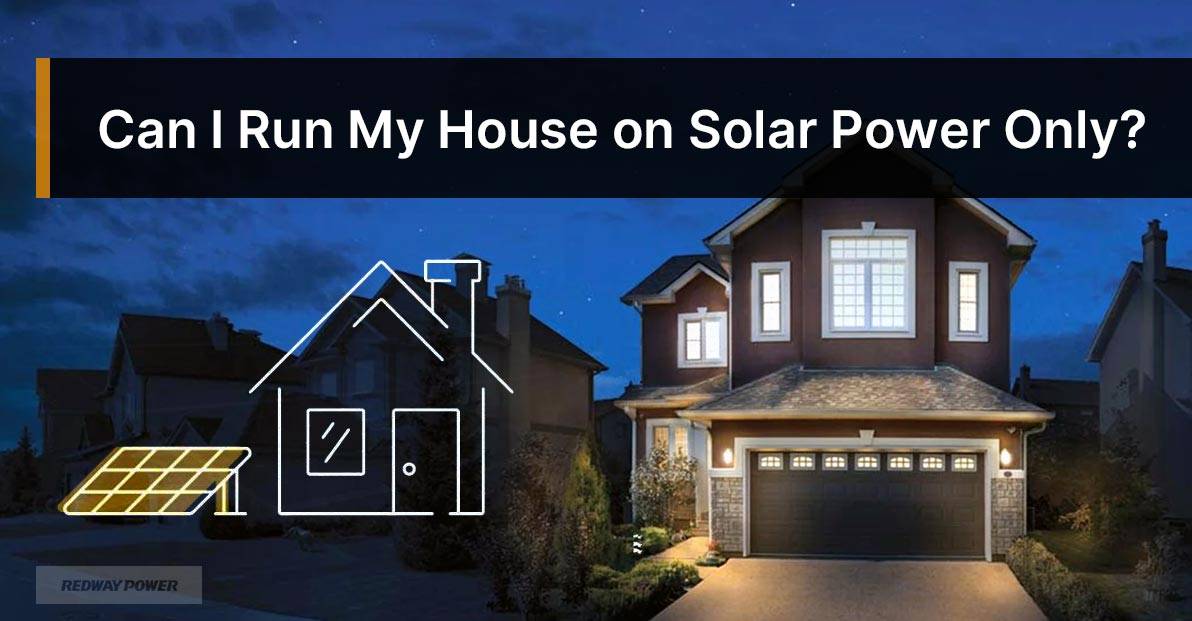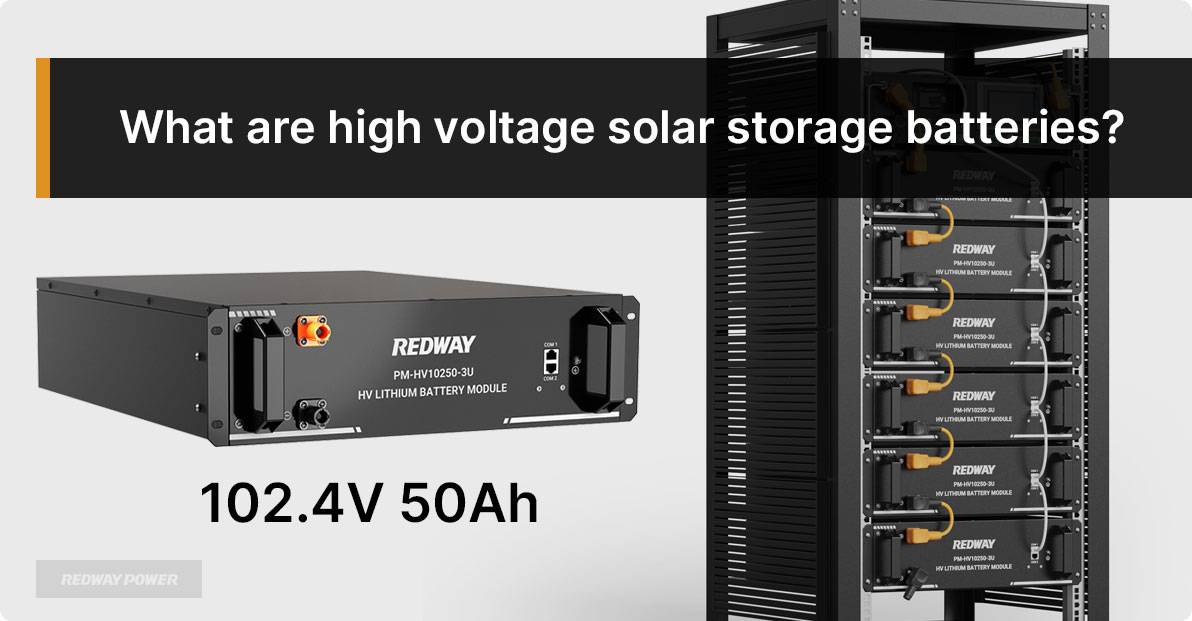High Voltage Solar Storage Batteries Factory
High Voltage Solar Storage Batteries, One-Stop Solution
Redway proudly leads as the premier global manufacturer of LiFePO4 HV Batteries. With their exceptional energy density, Redway LiFePO4 batteries are tailored for high voltage applications. Our expert battery team guides you in selecting the optimal LiFePO4 High Voltage Battery design, utilizing precise manufacturing processes.
As a prominent lithium battery manufacturer for OEM applications, Redway specializes in crafting, designing, and developing customizable LiFePO4 High Voltage Batteries. We offer comprehensive support for your branding business, providing options to personalize LiFePO4 HV Batteries with your logo, design, size, and specifications.
Choose Your High Voltage Energy Storage Battery Manufacturer
Custom High Voltage Energy Storage Batteries
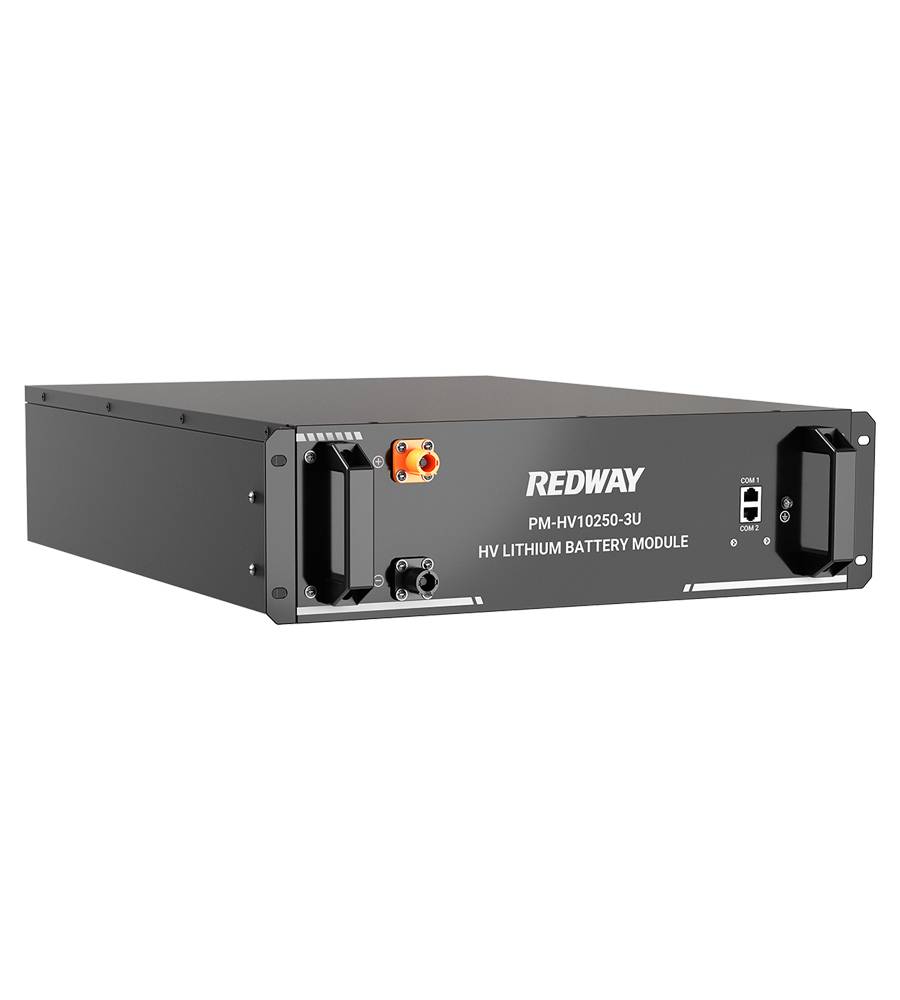
100V 50Ah HV-PM10250 3U
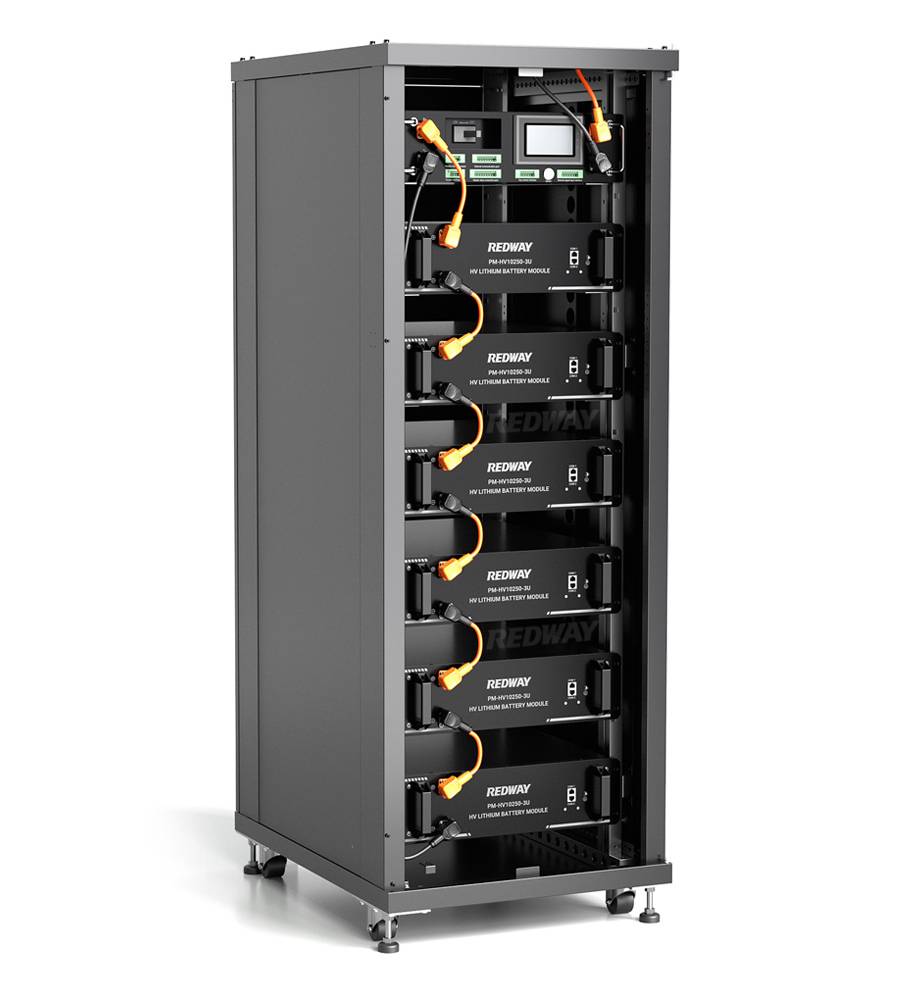
600V 50Ah 3U Rack System
What is the wholesale price of lithium battery?
You can click contact us or phone call us. We will give you multiple options of price.
Is Redway Power a trading company or factory?
Redway Power is a company with its own factory, integrating research, development, production, and sales.
How about the quality of Redway's LiFePo4 Battery product?
Redway Power boasts over 12 years of experience in LiFePO4 battery production and is an authorized supplier for CATL and BYD.
Can you do an OEM/ODM project?
Yes, we have engineers available to assist in designing and developing any related products.
What’s your MOQ?
MOQ varies according to battery voltage and capacity.
What payment terms can we accept?
We accept TT/Paypal/West Union, etc.
What are high voltage solar storage batteries?
High voltage solar storage batteries are engineered to function at elevated voltage levels, typically ranging from 200 to 600 volts or higher. They find widespread application in large-scale solar installations, commercial buildings, and utility-scale solar power plants. Regarding the distinction between high and low voltage solar batteries, it lies primarily in their operational voltage and efficiency. Some inverters utilize low voltage batteries, typically rated at 12, 24, or 48 volts, while others employ high voltage batteries exceeding 100 volts. Low-voltage batteries typically exhibit an efficiency of around 60%, whereas high-voltage batteries boast an efficiency of approximately 97%. Consequently, owners of low-voltage batteries may incur a 40% increase in electricity consumption to charge their batteries compared to high-voltage counterparts.
What is ESS?
An Energy Storage System (ESS) is a system designed to store energy for later use. It involves the storage of electricity generated at one time for use at a later time when it’s needed. ESS plays a crucial role in addressing the intermittency and variability of renewable energy sources, such as solar and wind power, which may not produce energy consistently throughout the day. There are various types of Energy Storage Systems, each with its own technology and applications. Some common types include:
- Battery Energy Storage Systems (BESS): These systems use rechargeable batteries to store electrical energy. Lithium-ion batteries are commonly used for this purpose, but other technologies like lead-acid, sodium-ion, and flow batteries are also employed.
- Pumped Hydro Storage: This method involves using excess electricity to pump water to a higher elevation, and then releasing the water through turbines to generate electricity when needed.
- Flywheel Energy Storage: It stores energy in the form of kinetic energy. A flywheel is accelerated to high speeds and maintains the energy until it is needed, at which point it slows down and releases the stored energy.
- Compressed Air Energy Storage (CAES): In CAES, excess electricity is used to compress air, which is stored in an underground cavern. When electricity is needed, the compressed air is released and used to generate electricity.
- Thermal Energy Storage (TES): This type stores energy in the form of heat. Common methods include molten salt storage, where heat is stored in a molten salt solution and then used to generate steam and produce electricity.
Energy Storage Systems are essential for grid stability, enabling the integration of renewable energy sources, load balancing, and providing backup power during outages. They play a crucial role in the transition to a more sustainable and resilient energy infrastructure.
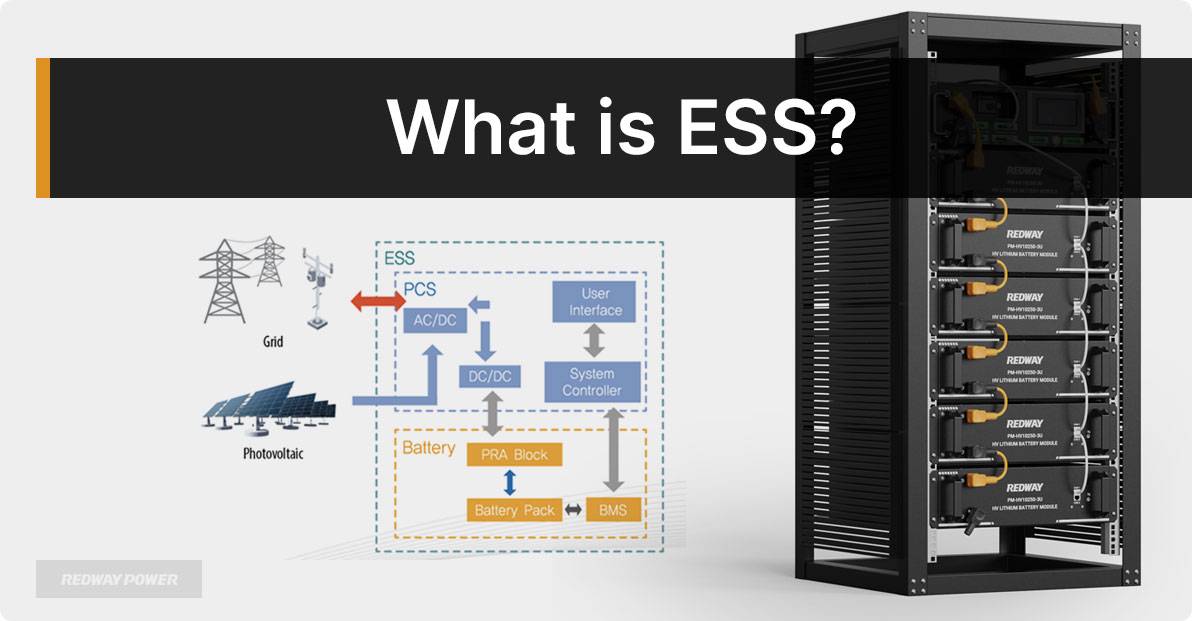
What is Home ESS?
Home ESS is a home-based Energy Storage System, designed for residential use to store and manage electrical energy within a household. These systems are becoming increasingly popular as people seek to integrate renewable energy sources, such as solar panels, into their homes and improve overall energy efficiency. A Home ESS typically involves the use of batteries, such as lithium-ion batteries, to store excess energy generated during periods of high renewable energy production (e.g., sunny days for solar panels). The stored energy can then be used during times when energy demand is high or when renewable sources are not actively producing electricity. The primary purposes of a Home ESS include:
- Energy Independence: Homeowners can reduce their reliance on the grid by storing energy for use during periods of high demand or when grid electricity is more expensive.
- Backup Power: In the event of a power outage, a Home ESS can provide backup power to essential appliances and devices, enhancing the resilience of the home.
- Optimizing Renewable Energy Use: For homes with solar panels or other renewable energy sources, a Home ESS allows for better utilization of the energy generated, as excess energy can be stored for later use.
Different companies may offer Home ESS products with varying features and capacities. These systems often come with smart energy management capabilities to optimize energy usage and savings. If you’re interested in Home ESS, you might want to explore offerings from companies that specialize in residential energy storage solutions.
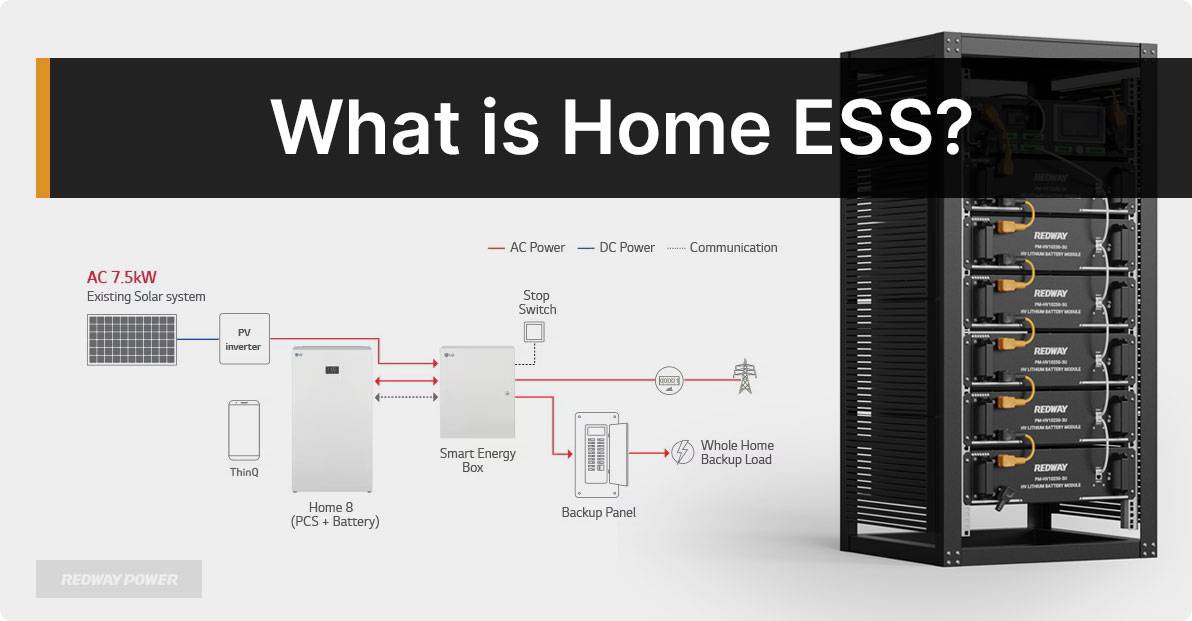
What does a HESS consist of?
A home-based Energy Storage System (ESS) typically consists of several components that work together to store, manage, and utilize electrical energy within a household. The exact components may vary depending on the specific system and technology, but here are the common elements found in a residential ESS:
- Battery Storage: The core component of a Home ESS is the battery storage system. This is where electrical energy is stored for later use. Common battery technologies include lithium-ion batteries, but other technologies such as lead-acid or emerging alternatives may also be used.
- Inverter/Converter: An inverter or converter is necessary to convert the direct current (DC) electricity stored in the battery into alternating current (AC) electricity, which is the type of electricity used in homes. It also performs the reverse function when charging the battery.
- Battery Management System (BMS): The BMS is responsible for monitoring and managing the performance of the battery. It ensures the optimal charging and discharging of the battery, protects against overcharging or over-discharging, and extends the overall lifespan of the battery.
- Energy Management System (EMS): The EMS is a software component that optimizes the use of stored energy based on factors like energy demand, electricity rates, and the availability of renewable energy sources. It may include features such as load shifting, time-of-use optimization, and remote monitoring.
- Solar Charge Controller (if applicable): For homes with solar panels, a solar charge controller manages the flow of electricity from the solar panels to the battery, preventing overcharging.
- Monitoring and Control Interface: This interface allows homeowners to monitor the performance of the ESS, check energy usage, and control the system settings. It may be accessible through a dedicated app or a user-friendly control panel.
- Grid Connection: The ESS is typically connected to the electrical grid. This connection allows the system to charge from the grid during low-demand or low-cost periods and discharge stored energy during high-demand or peak pricing periods.
- Integration with Home Energy Systems: A Home ESS is designed to integrate with other components of a home’s energy system, such as solar panels, smart home devices, and other energy-efficient technologies.
These components work together to create a comprehensive system that enables homeowners to store and use electrical energy efficiently, reduce dependence on the grid, and potentially save on energy costs. It’s worth noting that advancements in technology may introduce new features or components to enhance the capabilities of home-based Energy Storage Systems.
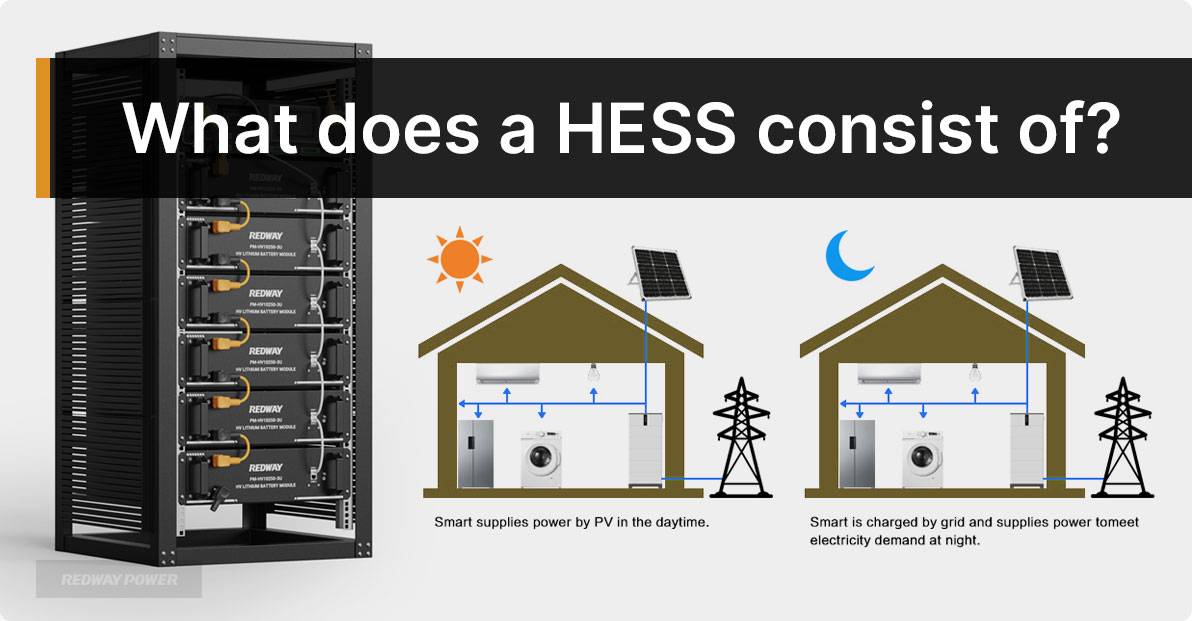
ESS vs BESS: What’s the Difference?
ESS (Energy Storage System) and BESS (Battery Energy Storage System) are related terms, but they refer to slightly different concepts within the broader context of energy storage. Here’s the distinction between the two:
- ESS (Energy Storage System):
- Definition: Energy Storage System is a general term that encompasses a wide range of technologies and systems designed to store and manage energy for later use.
- Components: ESS can include various types of energy storage technologies such as batteries, pumped hydro storage, flywheels, compressed air energy storage, and thermal energy storage.
- Applications: ESS can be used in various sectors, including residential, commercial, industrial, and grid-scale applications. It is a more inclusive term that doesn’t specifically refer to a particular type of storage technology.
- BESS (Battery Energy Storage System):
- Definition: Battery Energy Storage System specifically refers to energy storage systems that utilize batteries as the primary storage technology.
- Components: BESS consists of rechargeable batteries, an inverter system, and often includes a battery management system (BMS) to monitor and control the performance of the batteries.
- Applications: BESS is commonly used in applications where electrical energy needs to be stored and discharged, such as in grid stabilization, renewable energy integration, and backup power systems.
In summary, while BESS is a subset of ESS, not all Energy Storage Systems are necessarily battery-based. ESS is a broader term encompassing various storage technologies, including but not limited to batteries, whereas BESS specifically focuses on systems that use batteries as their primary means of storing and delivering energy. The choice between ESS and BESS depends on the specific requirements of the application and the characteristics of the energy storage technology being used.
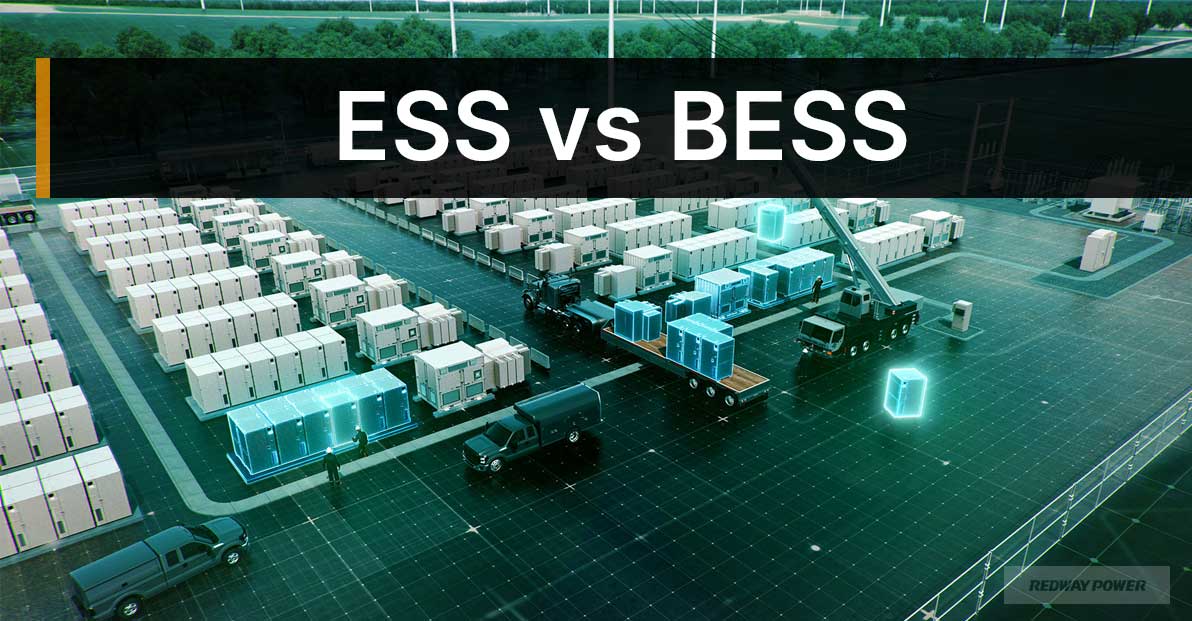
What is the voltage of ESS?
The voltage of an Energy Storage System (ESS) can vary based on several factors, including the specific type of energy storage technology used and the design of the system. Different types of energy storage systems may operate at different voltage levels. Here are some general considerations:
- Battery Energy Storage Systems (BESS):
- The voltage of BESS is primarily determined by the configuration of the battery cells within the system.
- Common battery voltages for residential applications might range from low voltages (e.g., 48V) to higher voltages (e.g., 400V or more).
- For grid-scale BESS, voltages can be much higher, and the systems may be configured in series to achieve the desired voltage levels.
- Other Energy Storage Technologies:
- For energy storage technologies other than batteries, such as pumped hydro storage, compressed air energy storage, or flywheel systems, the voltage can vary widely depending on the specific design and application. These systems may not necessarily operate at a specific voltage like batteries.
- Grid Connection:
- When the ESS is connected to the electrical grid, the voltage compatibility is also influenced by the grid’s voltage specifications. The ESS needs to be designed to integrate with the grid voltage.
- Inverters and Power Electronics:
- In many ESS configurations, an inverter is used to convert DC (direct current) stored in the batteries to AC (alternating current) for use in homes or to synchronize with the grid. The voltage of the AC output is determined by the inverter design.
It’s important to note that these are general considerations, and the specific voltage of an ESS will depend on the manufacturer’s design choices, the intended application (residential, commercial, or grid-scale), and regional electrical standards. When considering or installing an ESS, it’s crucial to consult the product specifications provided by the manufacturer and adhere to local electrical codes and regulations.
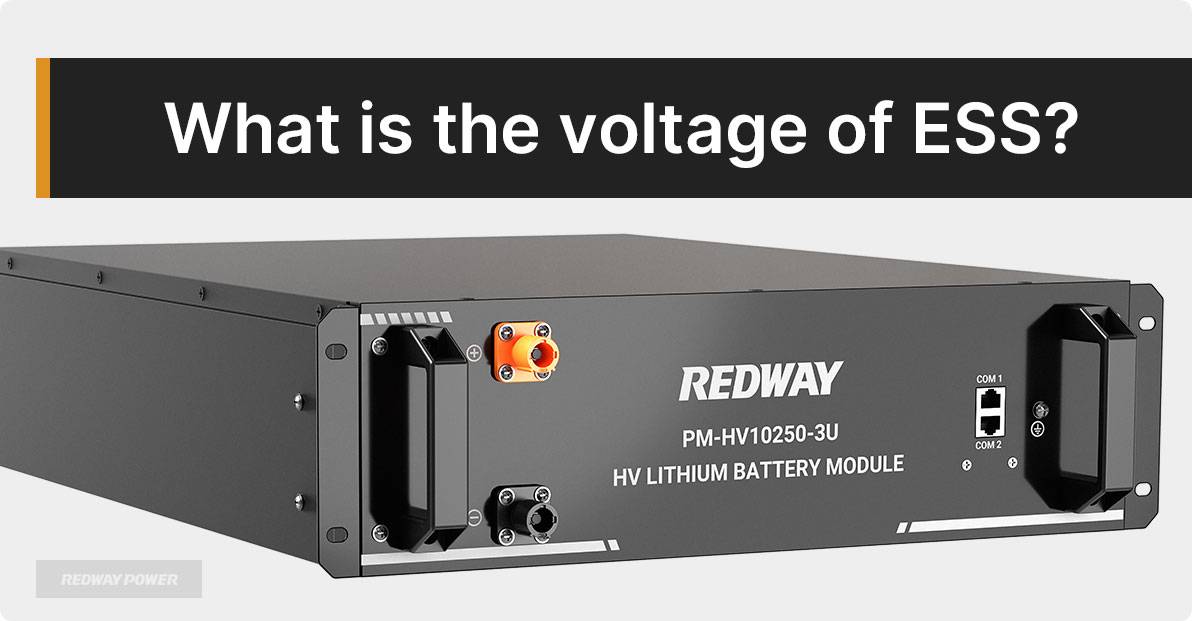
Can I Run My House on Solar Power Only?
Running a house entirely on solar power is indeed possible, and many people around the world have successfully adopted solar power systems for their homes. The key components for a solar-powered home include solar panels, an inverter, a battery storage system (optional but beneficial for energy storage), and a backup connection to the electrical grid or a backup generator for periods of low sunlight or high energy demand. Here are the essential steps and considerations for running your house on solar power:
- Install Solar Panels:
- Inverter System:
- Battery Storage (Optional):
- Connection to the Grid or Backup Generator:
- Energy Efficiency:
- Government Incentives and Rebates:
- Professional Installation:
Keep in mind that the feasibility of running your house on solar power depends on factors like your location, the amount of sunlight you receive, your energy consumption patterns, and the specific characteristics of your property. Additionally, the cost of solar panels and associated equipment has been decreasing over the years, making solar power a more attractive option for many homeowners.
